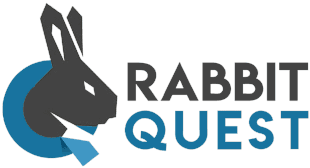Do employees REALLY end the day? The secret to work-life balance ⚖️
Do employees really finish the day at your place? How often do we think we have finished working while our laptop is still open, our head is still full of unfinished tasks, and our smartphone keeps buzzing with new emails? As an HR manager, you know how important it is to maintain a healthy work-life balance, not only for yourself but especially for your team. We share with you a habit that makes the biggest difference in improving work-life balance. Spoiler alert: The laptop should be closed after working hours!
Time to read: 5 minutes
The importance of REALLY shutting down 🔒
At a time when 'always on call' seems to be the norm, REALLY closing the working day is crucial for the well-being of your team. Turning off your laptop not only helps to mentally distance yourself from work but also creates a clear boundary between at work' and 'home'. Moreover, having a closing ritual as a vitality initiative supports conscious disconnection from work as a daily habit. Organising weekly team activities outside working hours, such as a virtual get-together or a joint sports activity, can also help to really end the working day.
For example, you could facilitate this by arranging a sports subscription for the team or creating an online platform where employees can plan and attend activities. Another effective approach is to promote mindfulness and meditation exercises as a vitality initiative at the end of the working day. HR managers can organise regular, short mindfulness sessions to help employees detach their thoughts from work and smooth the transition to their personal lives.
Simple but effective 👏
By incorporating this simple but effective habit into the daily routine, we lay the foundation for a more balanced and healthy work environment. Let's work together to create a culture where closing down is as important as starting up! Implementing a 'shutdown alarm' on work computers, reminding employees of the end of the working day, can also be a great vitality initiative.
Set this up easily by implementing software with the IT department that sends a notification at the end of the working day, reminding everyone to shut down. Furthermore, encouraging employees to keep a workday journal as a vitality initiative can help. Employees can briefly note down at the end of the day what they have achieved and what they want to pick up tomorrow. HR managers can facilitate this by providing digital or physical notebooks and promoting this habit in team meetings and internal communications.
Can everyone turn off their phones and laptops? 📳
It may sound like a simple task, but it takes some adaptation and support to make this habit land with everyone. Here are three ways you, as an HR manager, can get started right away to incorporate this habit into your team. Promoting a clean desk policy can also contribute to a sense of closure. You can encourage this vitality initiative by setting aside a few minutes every working day for employees to tidy their desks and leave their workstations tidy. This not only helps to end the working day mentally but also ensures a fresh start the next day. Another effective method is to implement a 'work-bag' ritual, where employees physically put away their work stuff at the end of the working day, symbolically contributing to the closure of their working day. HR managers can provide storage facilities for this, such as lockers or cupboards, and encourage employees to actively use them. Communicate the importance Explain to your team why it is important to deliberately close the working day. You can do this by emphasising during team meetings how turning off the laptop contributes to a better work-life balance and mental well-being. Plan a monthly 'shutdown workshop' where you get together to discuss the importance of shutting down and share tips. In addition, it can be useful to share success stories of employees who have already benefited from shutting down newsletters or internal communications.
Collect and publish these stories to inspire and motivate others to adopt the same habit. Organising a 'balance week' as a vitality initiative, offering a different activity each day that contributes to work-life balance, such as yoga, time-management workshops and shared walks, can also help raise awareness and acceptance of the importance of true closure.
Lead by example
It is essential for leaders to lead by example. Send a message to your team at the end of the working day stating that you are turning off your laptop and encourage your team to do the same. Set up automatic replies to emails received after working hours, with a friendly notification that you will respond the next working day, and encourage your team to do the same.
HR managers can also share a short video message from executives on a weekly basis, sharing their experiences and benefits of ending the working day. This personal aspect can have a big impact and encourage others to do the same. Another way to show exemplary behaviour is by introducing 'digital detox' days as a vitality initiative, where everyone, including management, does not use work-related technology outside working hours for one day a week or month. This can further reinforce the culture of shutting down and show that it is taken seriously at all levels within the organisation.
Create rituals
Encourage your team to develop a shutdown ritual, such as writing down tasks for the next day or shutting down and turning off the laptop together. Introduce a daily 'closing quarter' in which everyone writes down their tasks for tomorrow at the end of the day and then turns off the laptops together. This can be done physically in the office or virtually via a video call. Or consider putting together a closing music list to be played at the end of the working day. This list could consist of soothing or inspirational songs that help employees mentally disconnect from work and ease the transition to their free time. In addition, promoting a 'closing walk' as a vitality initiative, where employees take a short walk at the end of the working day to physically and mentally wind down their working day, can contribute to a healthier balance. HR managers can encourage this by organising joint walks or promoting walking routes around the office.
By following these steps, you will help your team to really wind down the day and ensure a better work-life balance. This not only contributes to your employees' well-being but also to their long-term productivity and satisfaction. Together, we can create a working environment where closing down is as important as starting up. Let's promote that healthy balance together! Evaluating work-life balance regularly through surveys and feedback sessions as a vitality initiative can also help you understand the effectiveness of measures and make improvements where necessary.




